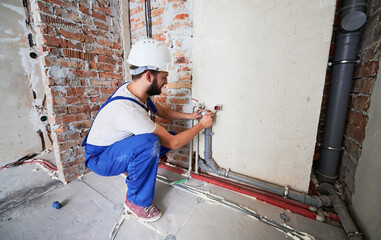When it comes to plumbing installation, there are many options available. There are many different types of plumbing equipment, and plumbing designs are as varied as the types of buildings. Plumbing design is a science, but a plumber must be able to make good estimates. They must know how much water each home or building uses throughout the day and how much pressure the public main has to release. Good plumbing design will also take into account the cost of operation and maintenance.

CV Installateur Nijmegen includes gas or fuel pipes, water and waste pipes, garbage disposal units, water closets, installed toilets and bathtubs, and any similar supplied fixtures. Plumbers specialize in household water systems and are aware of local building codes. They are also able to perform faultless work because they can use the right tools for the job. A plumber may offer a warranty or guarantee on the work that they perform. You should also consider how much water is necessary for each fixture, and how much money you are willing to spend.
Plumbing installation requires a building permit. It will also require a plumbing diagram, which shows the pipe sizes, vents and traps, and angles of connection. A building inspector will use the plumbing diagram to determine if the installation is safe and acceptable. If you are planning on installing plumbing in your new home, it is important to follow local building codes. If you don’t follow local regulations, you could face problems. Listed below are some tips to help you make the right plumbing installation.
First, identify where the walls will be moved to accommodate new plumbing. Remove any drywall and tile to free up space for the new piping. After that, the plumber should move on to installing the appliances involved in the expansion. They then connect these appliances to the piping and grout them into place. Once they have completed the installation, they should check the plumbing for leaks and then restore the tiles and drywall. If you need to move any walls, be sure to ask your plumber for a tape measure to ensure that you are not breaking the walls.
Proper plumbing installation is more than just following codes. It involves installing an efficient, leak-free system. A good plumber should lay out the pipes in such a way that they can be easily maintained. Plumbing should be installed by professionals who know how to use tools efficiently. A good plumber will also make sure that you don’t waste any material, weaken framing or create a hazardous situation. You can also expect a plumbing installation that lasts.
Before building a new home or building, plumbers install sewer accommodations stubs, a basic supply line, and a waste line. These pipes are installed under the slab before the building’s frame is installed. Additional pipes are installed as the frame goes up. The plumbing installation process can be difficult if you don’t know how to start it. For a professional plumbing installation, a plumber will understand all the details of the construction process and be able to complete the work efficiently and quickly.
When it comes to residential plumbing, the first step is drilling. In the case of residential plumbing, this process begins by drilling through sill plates, which are located below the floor. The hole should be the same distance apart to accommodate the water pipes. The pipes should run parallel to the floor. Upon completion, you will have a clear picture of how to connect the various pipes in the house. Then, you can move on to the next step.
In other cities, plumbers must comply with the city’s construction codes. This includes Building (BC), Plumbing (PC), and Fuel Gas (FGC) codes. During this process, plumbers must follow the plumbing code to avoid causing hazards, overloaded, or unsafe conditions. Local Laws and codes may also apply. The Housing Maintenance Code, Electrical Code, and Fire Code also must be followed. So, you should hire a licensed plumber for any plumbing installation project.
The next step in plumbing installation is connecting the water line to the septic tank. To do so, you will need to buy stainless steel taps and a valve. Then, you will need pipe fittings such as elbows, tees, and unions. Also, pipe hangers will be necessary to keep the pipe in place. Once these are installed, you will have a functioning plumbing system. If you want to avoid the hassle of dealing with a clogged sewer, call a plumbing professional.
